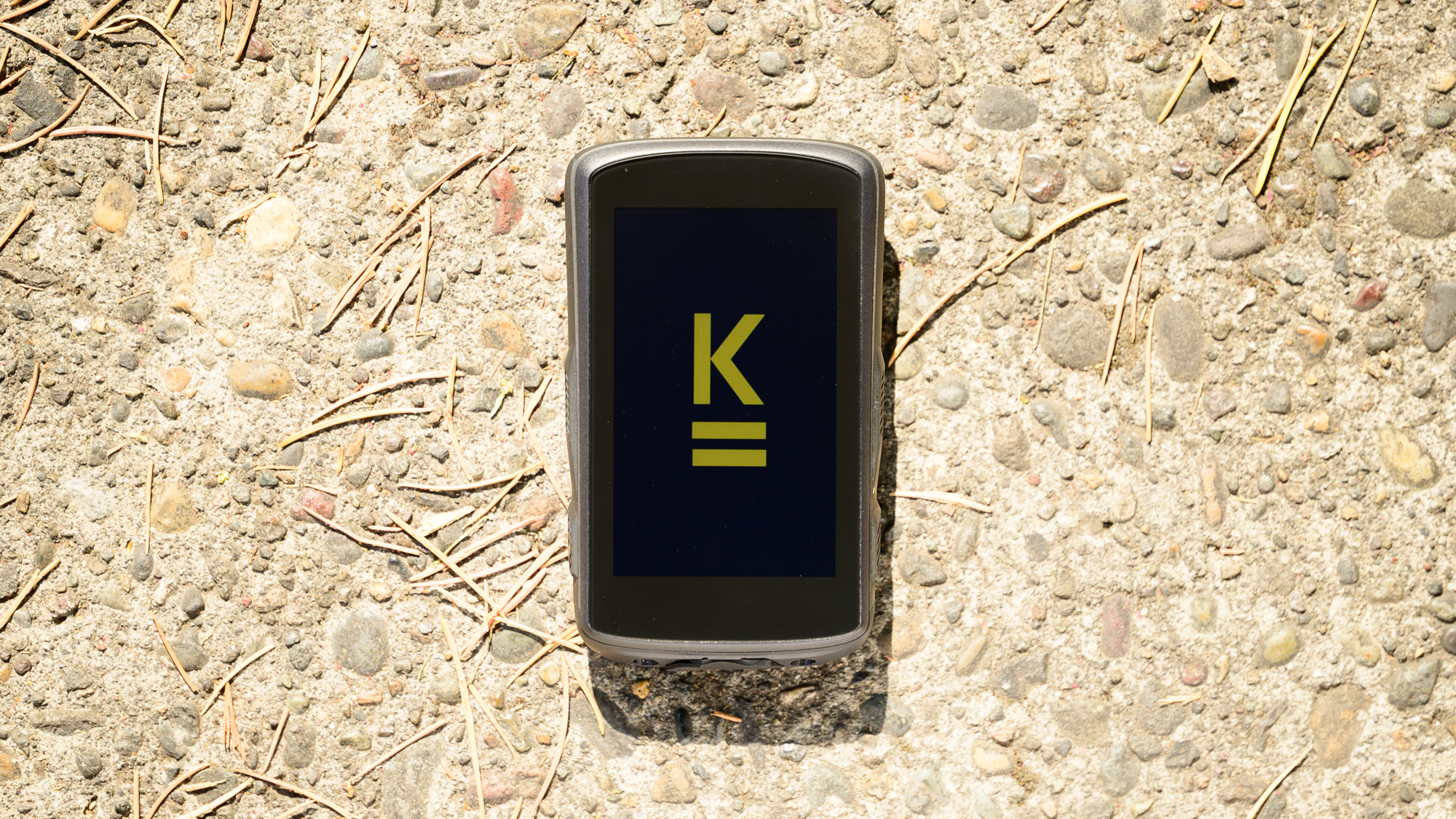
Throughout this summer, one of the projects I've been working on is a comprehensive update to our article covering the best power meters. As with all of our buyer's guides, that has involved exhaustive testing and a deep dive into the features of every option for every product I include, and even the ones I don't. When it was time to look at the SRAM options, including the SRAM Red AXS power meter and the SRAM Apex AXS power meter upgrade, I found something called SRAM AXS Web. It was clearly a strength of SRAM power meters and I labelled it as such in the buyer's guide.
SRAM AXS Web is a product that, as SRAM says, "tells the story of how your bike performed" on your ride. A good way to think about that is to consider how many of us use a product like Strava. After a ride, while having a bit of food, you might browse through the data that describes how your body performed. You could zoom in and check your power and heart rate on that one climb you love (or hate) and see if you did a better job that day. What you can't see is what gear you were in or if your tire pressure was right. That's where SRAM AXS Web comes into the picture. The system still has performance data as it relates to your body but it goes well beyond that and takes a deep dive into the hardware you were using.
One of the more surprising aspects of all this, to me at least, is that SRAM AXS Web isn't new at all, but has in fact been around since 2020 and simply passed me by, despite the fact that I've been primarily riding SRAM AXS since Red came out in 2019 and AXS Web is part of the AXS phone app.
For years SRAM has had a comprehensive ride analysis tool available for free that works with any hardware. It's integrated into the software that SRAM hardware riders have to use for management of that hardware. It's also the perfect backend system for Hammerhead computers, which have been part of the SRAM ecosystem since 2022. Despite all that, there's virtually no press coverage and I've never met anyone who uses it. Keep reading to see what it can do for you and why I think it might play an even bigger role in the next generation of SRAM products.
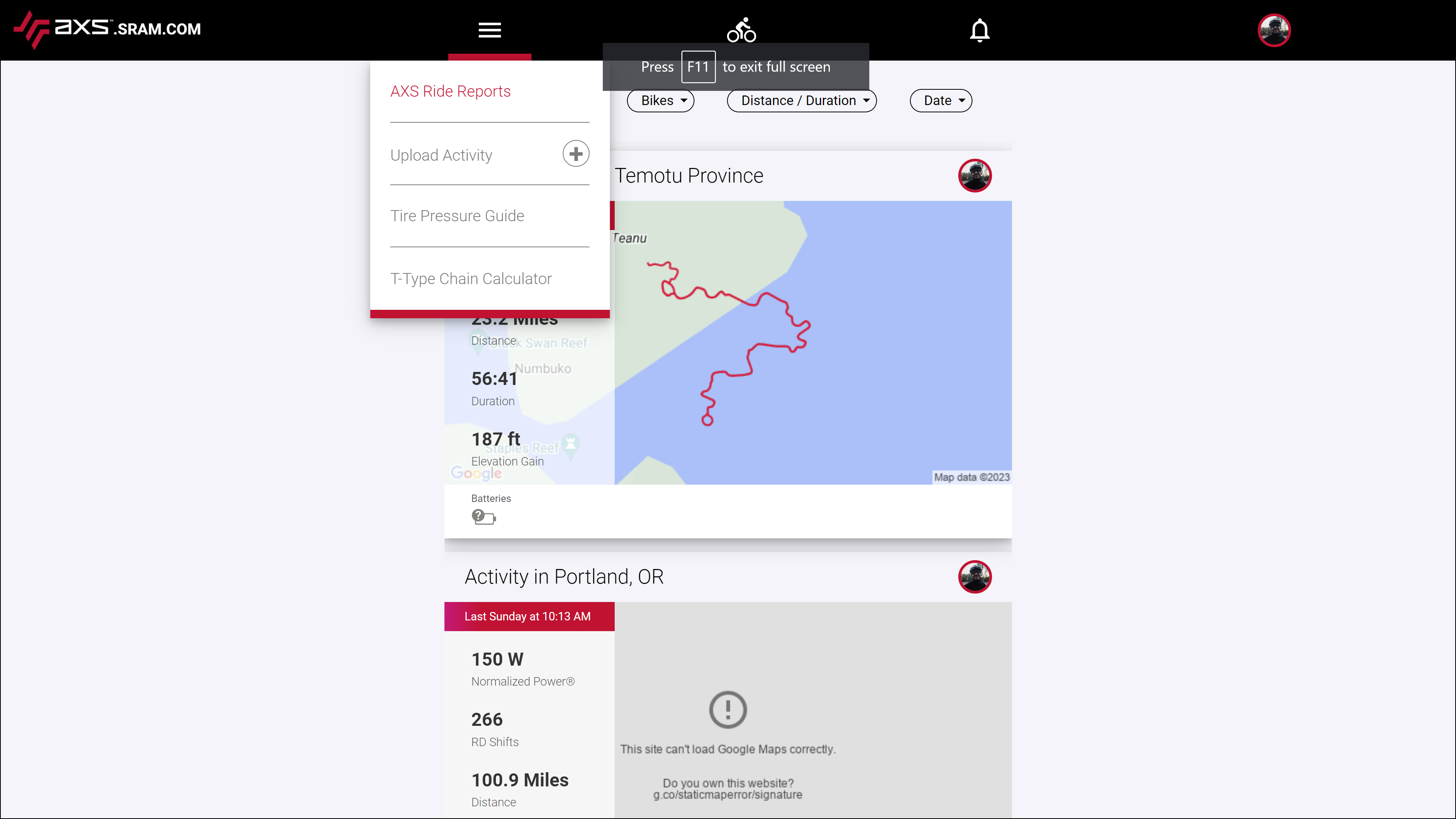
What does SRAM AXS Web provide?
There are a lot of services that allow you to analyse your ride after the fact. First you will see data about the ride. That means statistics like how far did you ride, how fast, elevation gain, and temperature. From there you can then compare that data against your body's performance. Strava allows you to pick a ride then focus on a section, or the whole ride, and see what your heart rate, speed, power, and cadence were. Other services, Garmin Connect and Stages are both good examples, that take that same data and add a whole range of other body focused metrics as well as industry standard power training concepts like TSS. Strava also has its own, non-standard, training metrics like relative effort, and almost every option will break out time spent in heart rate and/or power zones. SRAM AXS Web offers that same data.
Start by pairing a Wahoo, Hammerhead or Garmin bike computer and the ride report section of the ride analysis page covers data about each ride. You can see start and stop time, distance, speed and elevation gain, temperature, and a map of the ride. If you are riding with a heart rate sensor you will see average heart rate and if you are using a power meter (brand isn't important) then you will also see normalised power. There's also a rather pretty line chart showing the moments you stopped and visually representing how long that stop was.
At the bottom of the page, in the "Rider Performance" section, the data continues to dive into how your body performed. In this section you will find graphics for power and heart rate zones, a cadence chart, power balance, power distribution, power and heart rate charts, and power and heart rate curves. There are also a few specific numbers covering average power, 20 min normalised power, max power, average cadence, and total work done. Like other services you can drill down into a section of the ride or see the info for the whole ride.
The latest race content, interviews, features, reviews and expert buying guides, direct to your inbox!
SRAM acknowledges that nothing in these metrics is all that special but there's one more section. In the centre of the page is a section called "Component Summary", and this is where SRAM is providing something no one else does. This section isn't going to be useful for everyone but it's not specific to SRAM hardware. You can use this with SRAM or Campagnolo electronic shifting and any power meter from any brand. The only caveat is that the numbers for gearing might not match the options exactly. Still, as long as you have the sensors, you can see front derailleur shifts, FD shifts/miles, rear derailleur Shifts, and RD shifts/mile at the top. Below that you can see a visual representation of gear usage both front and rear, the average power for each gear both front and rear, the gear ratio plotted vs. elevation profile and time, and tire pressure data. SRAM calls all this data "the story of how the bike performed on the ride."
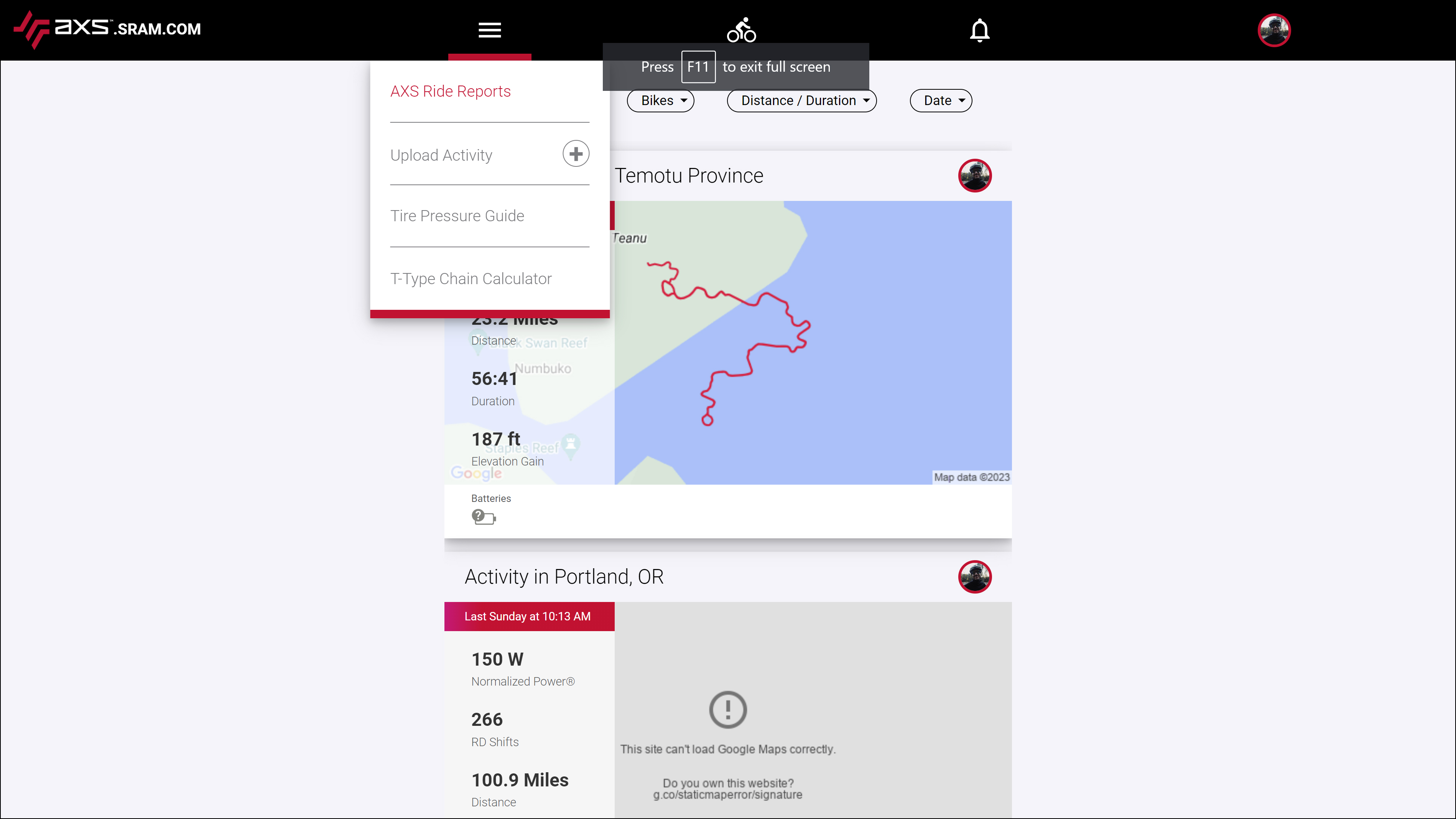
What is SRAM AXS Web missing?
SRAM is quite clear that what you see in terms of the sensor data isn't the end. In the future there will be new sensors and new data will show up here. That's not an admission of any new products coming but rather an acknowledgement that there will always be new developments. One of the reasons that SRAM AXS Web exists is that the company wants control of new sensor integrations.
Right now though, there's still one glaring deficiency and that is the lack of long term trend data. You can analyse each ride from the perspective of your body and, uniquely, from the perspective of your bike. You can zoom into a section and look at how both you and the bike performed but you can't see how any of that fits into the context of your overall fitness. There's no indication of how your performance today relates to the past or future and it doesn't keep track of distance travelled on specific components.
The lack of trend data has another side effect too. Because the system isn't keeping track of long term trends, there's no integration with indoor riding systems. What that really means is no Zwift integration but you can extend that to whatever indoor training software you want.
SRAM is only looking to analyse individual rides through the lens of the hardware. Zwift doesn't record the kinds of metrics that SRAM is focusing on in the ride files. Those two facts mean that SRAM has no motivation to try and get auto-uploading to happen and it doesn't actually matter to the end user anyway. Zwift can auto upload to Garmin Connect, or Strava, and that's important because you want that time to count against long term trends. With AXS Web it doesn't matter but clearly that's an issue long term if SRAM wants to be a serious player in this category.
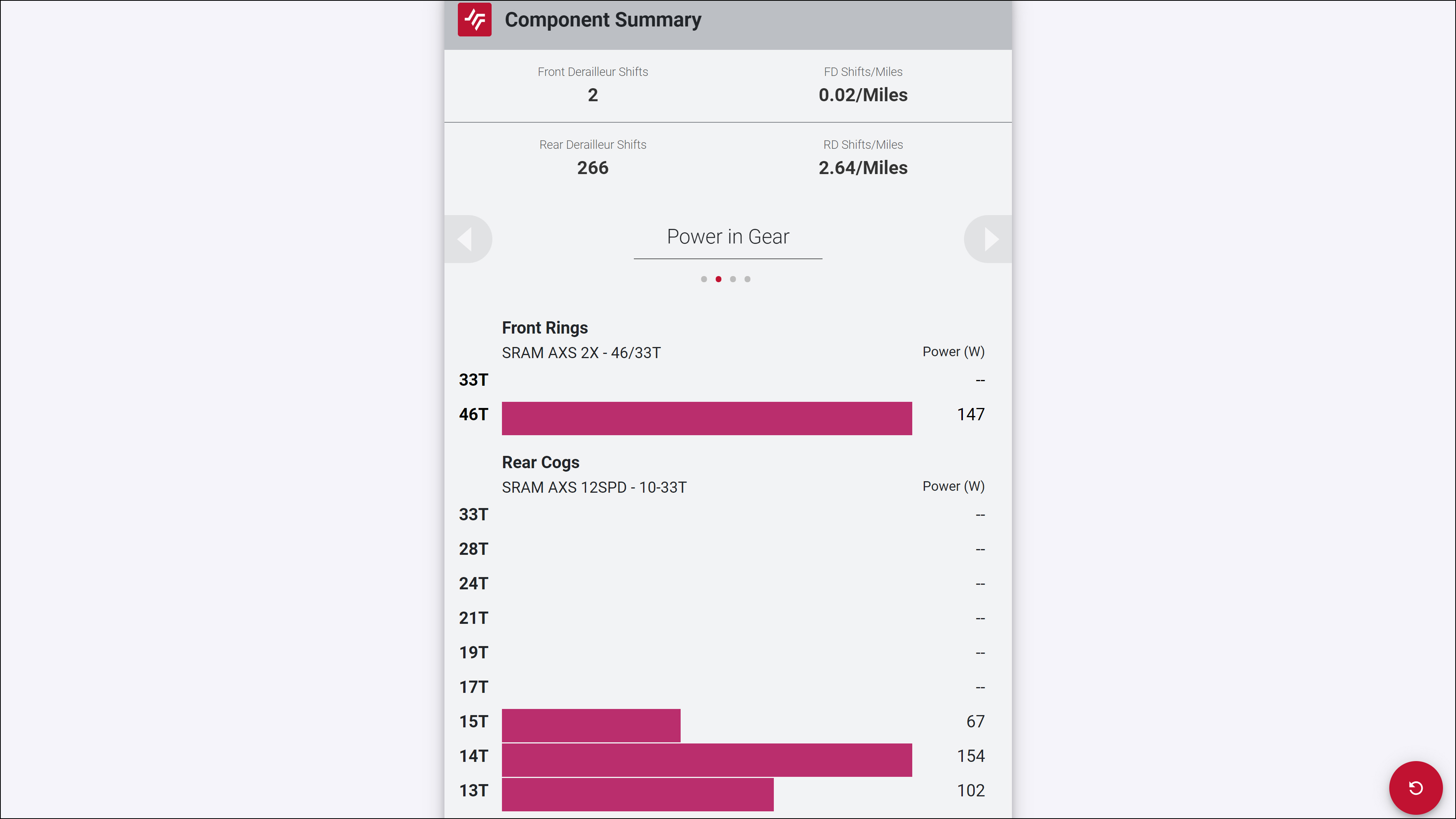
What does it look like to use SRAM AXS Web?
I'll be completely honest that I am excited about SRAM AXS Web. I can see how the more integrated you are with SRAM hardware the more it could be useful to you. I'm also told by SRAM that it's an incredible tool for the pro teams the brand supports and that when doing product development, with signed testers, it's a tool that nothing else can match. What about for the end user though? The best way I explain what this tool offers is to share an example.
There's a spot I ride regularly that is roughly 3.2 miles / 5.1 km long. It happens to be a stretch with only one traffic light, which is often green, and a bike lane almost the entire way. It's also quite flat and close enough to my house that I've incorporated it into my rides both short and long for years. Last weekend I went through there as part of a long ride where I was trying to hold 165 watts for the entire 100 mile ride.
I was riding my Enve Melee with SRAM Red AXS and the gearing I prefer is 46/33 upfront with a 10-33 rear cassette. When I zoom into that section of the ride, I can see that I never shifted in the front and I only shifted between the 15, 14, and 13 tooth in the rear. That section took me 9 minutes and 28 seconds but I spent 8:21 in the 14 tooth rear cog. My average power in the big ring, and therefore the whole section, was 147 watts but I averaged 154 watts during my time in the 14 tooth cog. I can also compare all of that data against my heart rate for that section and see that I must have been taking a little bit of a break because it was lower than the average of the ride. I don't have tyre pressure sensors but if I did that info would be there too.
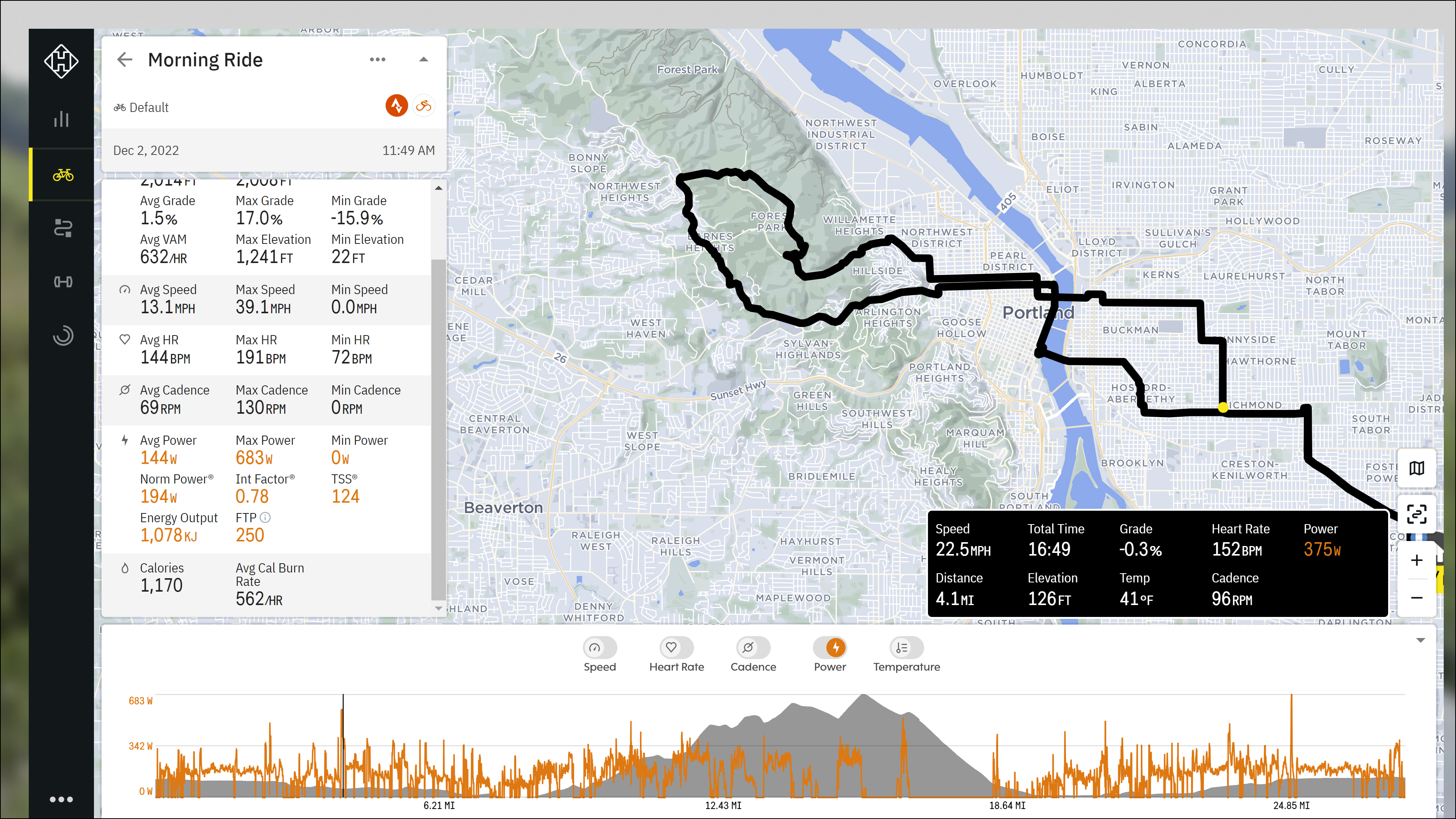
How does this all relate to Hammerhead?
I've written and reviewed the Hammerhead Karoo 2 a number of times over the years. One of the things that I often mention is that there's not a great deal of ride analysis on the backend. As soon as I started to explore SRAM AXS Web I started to connect some of those dots. The truth is that things don't line up perfectly.
SRAM AXS Web was in place two years before SRAM purchased Hammerhead. At one point SRAM had a 3G enabled device that directly collected data from pro riders during a race but it’s long gone. Despite what it might appear, I don't think there was a master plan involving Hammerhead. Still, that doesn't mean there isn't a master plan in effect now.
SRAM was tight lipped about what may or may not be coming from Hammerhead. I don't have any insider knowledge but I can speculate and I think the situation deserves some speculation. What we know is that Hammerhead opened pre orders for the Karoo 2 in August of 2020. We also know that SRAM, the parent company of Hammerhead since 2022, dropped the price of the Karoo 2 by 35% in June. That price has since gone back up however the webstore for Hammerhead has an asterisk on the Karoo 2 page saying "limited stock remaining." That time frame, price fluctuation, and stock situation sure feels like it could be leading to a new product coming soon.
We can also make some guesses about what the Hammerhead Karoo 3 might look like. The definitive feature of the Karoo 2 is the incredible screen, that won't be going anywhere. In fact, it might be getting better and I think we all hope for smaller bezels. I suspect the dual touch screen and button user interface will also remain as, again, it's part of the identity of the product. Something also tells me that the sim card capability of the Karoo 2 is likely to stick around even though I certainly hope it becomes less important and there is better bluetooth functionality.
The things I think might be new to the Karoo 3 are a focus on back end data analysis and battery life. As I already said, the very first thing I thought of when I understood AXS Web was Hammerhead. It would make a lot of sense to integrate that functionality more fully into the Hammerhead webportal. Perhaps similarly to the way that AXS Web integrates with the SRAM AXS phone app? The other thing I think we can expect from the Karoo 3 is better battery life. Right now it lags behind Garmin and Wahoo and I've heard that acknowledged by a lot of people over the years.
You’ll have to decide if you think my ruminations make any sense. I don’t know and nothing in my conversations gave any hints. Either way though, it’s worth checking out SRAM Web AXS if you have a power meter and electronic shifting. For those that are heavily invested in the SRAM ecosystem there’s even more data to check out. It’s all free and it might show you that you need a new cassette.
Josh hails from the Pacific Northwest of the United States but would prefer riding through the desert than the rain. He will happily talk for hours about the minutiae of cycling tech but also has an understanding that most people just want things to work. He is a road cyclist at heart and doesn't care much if those roads are paved, dirt, or digital. Although he rarely races, if you ask him to ride from sunrise to sunset the answer will be yes.
Height: 5'9"
Weight: 140 lb.
Rides: Salsa Warbird, Cannondale CAAD9, Enve Melee, Look 795 Blade RS, Priority Continuum Onyx

